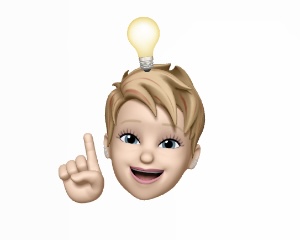My Learning Plan
The e-portfolio that I use is SpacesEdu. It’s an online platform that creates an engaging digital learning environment, fosters empowered learning opportunities, promotes visible and continuous assessment, aligns with the new reporting order and BC’s new curriculum, and builds a community of learning. (spacesedu.com, 2022) It is both a portfolio for students and an assignment and assessment management tool for teachers. In my class, I have created both community and individual spaces. In our community space, which every student and their families have access to, we post pictures of our adventures, fun activities, announcements, and school events. Each student also has at least two individual spaces. They have their Work Space, which is where they upload all of their activities and pictures or videos of anything else they’d like me to assess. Their families have access to this too, so they have an ongoing picture of how their student is doing in class. Each student also has a Core Competency Space, where they track and reflect on the core competency goals that hey made at the beginning of the year. In both individual spaces, I provide ongoing support and feedback.

Every assignment that I assess is uploaded to Spaces by the students. I create an activity for them which includes instructions and any relevant materials or uploads. I then tag the curricular competencies and content that are being assessed in the assignment. Once students upload their work- this could be a worksheet, a picture of their work, a video, a digital file, or an audio clip- I assess their progress for each of the competencies I tagged. Instead of getting a mark like 7/10 on an assignment, they will get an assessed proficiency using the provincial proficiency scale on each of the competencies tagged. This automatically differentiates assessment because the content is only part of the activity. Students also have the opportunity to show their understanding of the curricular competencies which tend to be skill based. Additionally, I can differentiate by having students hand in different work based on the competencies I’m assessing. Sometimes I use choice boards which allows students to choose the activity they will submit, other times I allow them to submit their work as a video or audio file if the writing is not the purpose of the activity. This flexibility allows me to assess the students based on the competencies and so it is strength based. I am looking for what they can do and offer opportunities for them to show me what they know.
As much as I love this program, there have been some issues that have come up. Parents like to look at their student’s work but they very seldom comment on it. If a student doesn’t hand in an assignment, it doesn’t work for or against them. While I love that concept in theory, it makes it difficult to assess a student who’s missed significant work. On this reporting period, I had a student who handed in everything and a student who missed 37 assignments getting the same overall grade in math. One is playing with concepts and taking risks. They show proficiency often but are also excited about learning and willing to try new things without fear of failure. The other has handed in minimal work with regular and ongoing adult support and has achieved the same proficiency. At least, that’s what the data says.

I’ve also noticed that students don’t necessarily read my feedback and use it to improve their work. Once I mark an activity, it gets posted in their work space and they can see it every time they open the app. We even have computer lab time booked where they are supposed to comment on feedback I’ve given. However, they are easily distracted by the pictures in the community space and don’t often reflect- even when it’s an expected activity.
Questions I’d like to answer:
- Do class proficiency levels go up based on the amount of time we spend on a concept or the number of activities we do practicing the skill?
- Will students become more reflective if I ask deep thinking questions about their work?
- How can I differentiate between students who are barely putting in an effort and ones who are taking risks? Should I?
- I’ve started developing rubrics for the proficiency scale for some of the bigger competencies. Does this make a difference in how I assess proficiency?
- Do I tag curricular or content competencies more often?
- Is there a notable difference in proficiency on the curricular competencies between the grade 5s and grade 6s (the competencies are the same for the most part)?
- Does parent feedback on work change the student’s perception of its importance and therefore the effort they put into it?
What data would I use to answer these questions?
- The first point can be answered by looking at my proficiency report in the app. I can see overall proficiency, including how many activities were submitted for each competency.
- For the second point, I would have to develop a system to measure what being reflective looks like. I will be able to see if students comment more but have no way to evaluate reflection yet.
- The third point make be a pedagogical debate. I don’t know what to do about that one yet. Especially if I don’t want assessment to be punitive. This will require some thinking and collaboration.
- The data for the next three points can all be found within the proficiency report. While I have no way to pull them out specifically, the data is all there.
- The final point about parent involvement could be a tough one to measure. It could be difficult to determine whether parent involvement was the factor that changed a student’s perception or whether they may have more interest in particular topics. But I could track data on whether they make changes to assignments that a parent has commented on.

My Learning Goal:
I would like to learn to analyze qualitative data to answer some of the questions I have asked above. Even my quantitative questions don’t feel strictly quantitative because they have qualitative aspects to them. For example, if I look at the number of times we work on a concept verse the overall proficiency, I can find that data quantitatively. But since the activities also involved different strategies and even teaching models, does that also make them qualitative? I think once I have a better understanding of qualitative analysis, I will be better equipped to answer some of these questions. I look forward to this new learning to help transform the way I look at learning in my classroom.
Leave a Reply